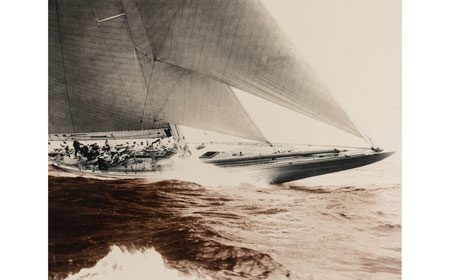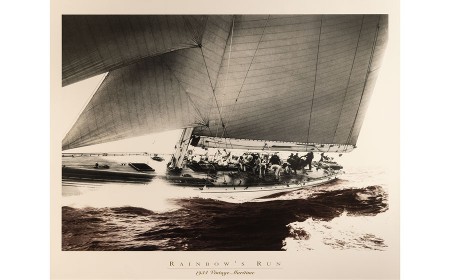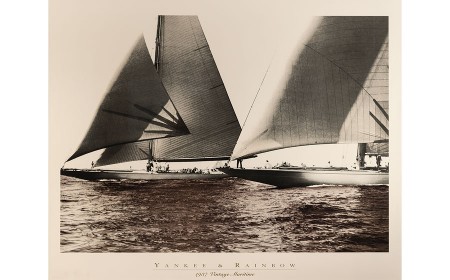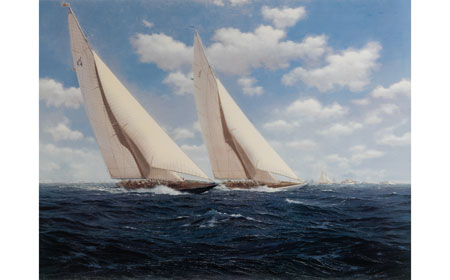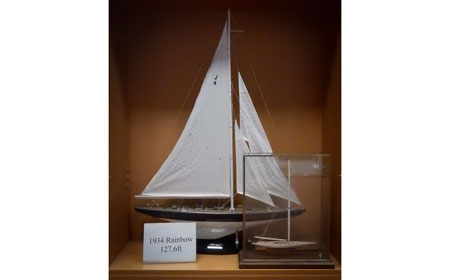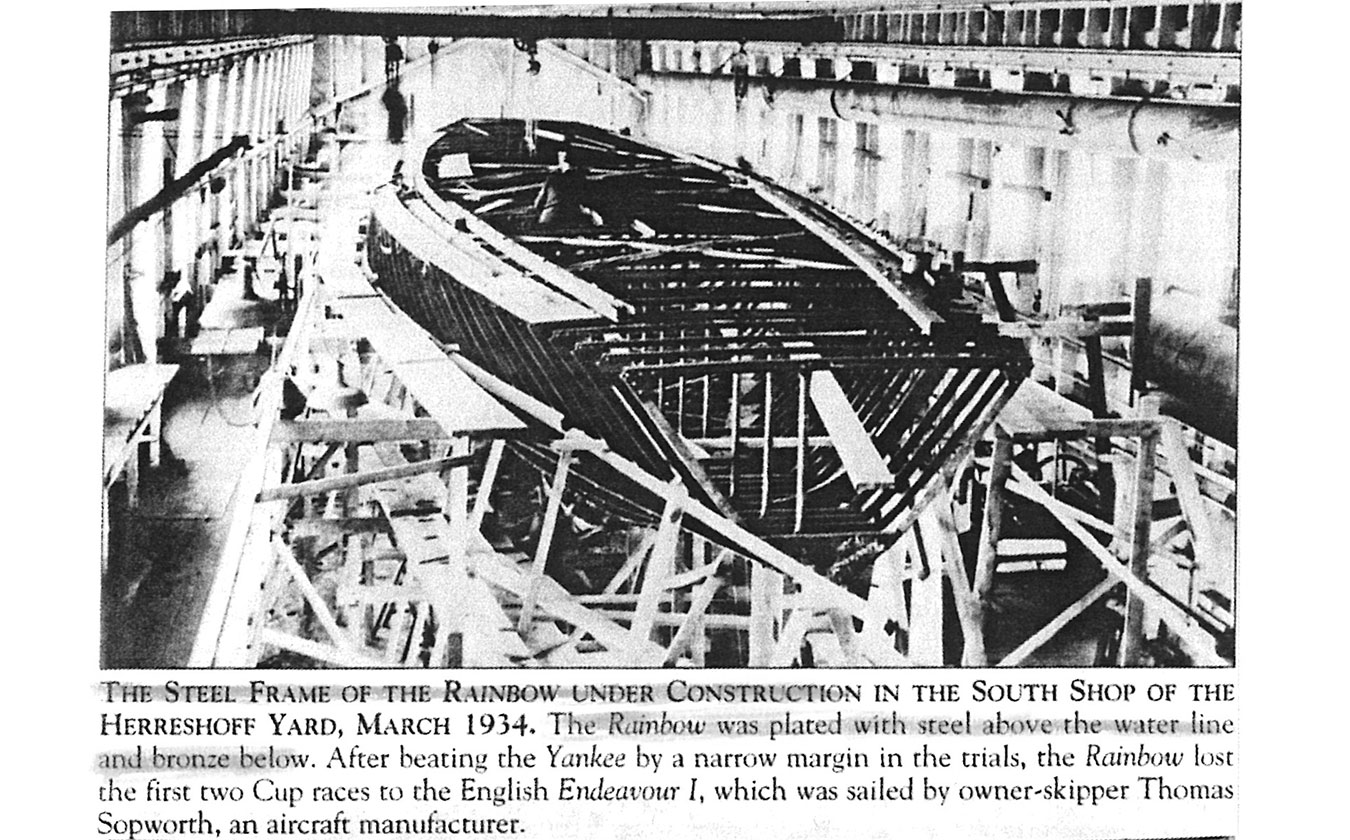History
Rainbow was designed by W Starling Burgess and launched in 1934 from the Herreshoff yard where she was built in just 100 days. The J stepped a pear-shaped duralumin mast, designed to take the strain of the double-headed jib — first used on Whirlwind — and she was originally rigged with a Park Avenue boom. This was later removed because it was considered too heavy.
As with the Watson-designed Shamrock II in 1901, which was the first boat to be designed following numerous towing-tank tests, the Burgess-designed Rainbow was the first J to be conceived according to the same principles: during two months in 1931, at the tank-test facilities at the University of Michigan, dozens models were tested by William Starling Burgess.
1934
Defenders having won all but three races in the 14 defenses
to this point, Harold Vanderbilt must have been scared when Sir Thomas Sopwith's Endeavour
vaulted out to a 2-0 lead.
But Sopwith, handicapped by a hastily assembled amateur crew, after his professionals left him mid-series in a dispute over money, was outmatched by the disciplined, seasoned professionals that Vanderbilt had assembled. Numerous tactical errors and management failures allowed the Americans to triumph despite sailing a slower boat.
Endeavour couldn't keep up with the relentless pace. In the third race, again with a big lead that should have seen Endeavour 3-0 ahead, Sopwith was lured into a trap in the dying breeze. Rainbow climbed to weather and moved into the lead to take the race. The third race became controversial after the New York Yacht Club refused to hear a protest because Endeavour had failed to hoist a protest flag at the time of the foul, as required by US rules but not British rules.
The New York Yacht Club narrowly avoided defeat when again the challenger had won the first 2 races in a best of 5 race series and lost the vital third race on the final beat by the superior handling of Rainbow's skipper, Harold Vanderbilt. The defeat so devastated Sopwith and his crew that they were unable to win any of the remaining 3 races.
After this protest Sopwith vowed “I will never challenge again. …It is a business. It is a business and we in England who sail our yachts because we love sailing can never win the America’s Cup until we make it a business, too” He was back in three years.
After the 1934 America's Cup, Rainbow was laid up in dry dock for two years in Bristol, and then refitted by Vanderbilt as trial horse. Sold to Chandler Hovey in 1937, to race the defender selection trials, but Ranger eliminated it. Rainbow was laid up at the end of 1937 at Herreshoff Manufacturing in Bristol and then it was sold for scrap in 1940.
Source:www.americascup.com 7/2/2007
Boat
Cup(s) Sailed: 1834 (won)
Crew: 31
Owners: Harold Stirling Vanderbilt, Frederick W. Vanderbilt, William K. Vanderbilt, Alfred G. Vanderbilt, J.P. Morgan, Marshall Field and Winthrop W. Aldrich
Year Built: 1934
Launched: May 15, 1934
Type: Keel Sloop fitted with a centerboard
Designer: William Starling Burgess
Builder: Herreshoff Manufacturing Company
Construction
Frames: Steel
Planking Top: Steel — Supplied by Lukens
Planking Bottom: Tobin Bronze
Deck: Pitch Pine
Mast: Aluminum
Boom: Wood
Spinnaker Pole: Wood
Keel Ballast: Lead
Dimensions
Length Overall: 127.6 ft. / 38.9 m
Length Waterline: 82.0 ft. / 24.99 m
Beam: 21.0 ft. / 6.4 m
Draft: 15.0 ft. / 4.56 m
Draft with Keel Lowered: N/A
Displacement: 141 tons
Tonnage: N⁄A
Sail Area: 2,296.8 sq. ft. / 700 sq. m
Mast: 154.5 ft. / 47.8 m
Boom: 66.2 ft. / 20.19 m
Bowsprit: N/A
Top Mast: N/A
Source:www.americascup.com 5/2/2007

